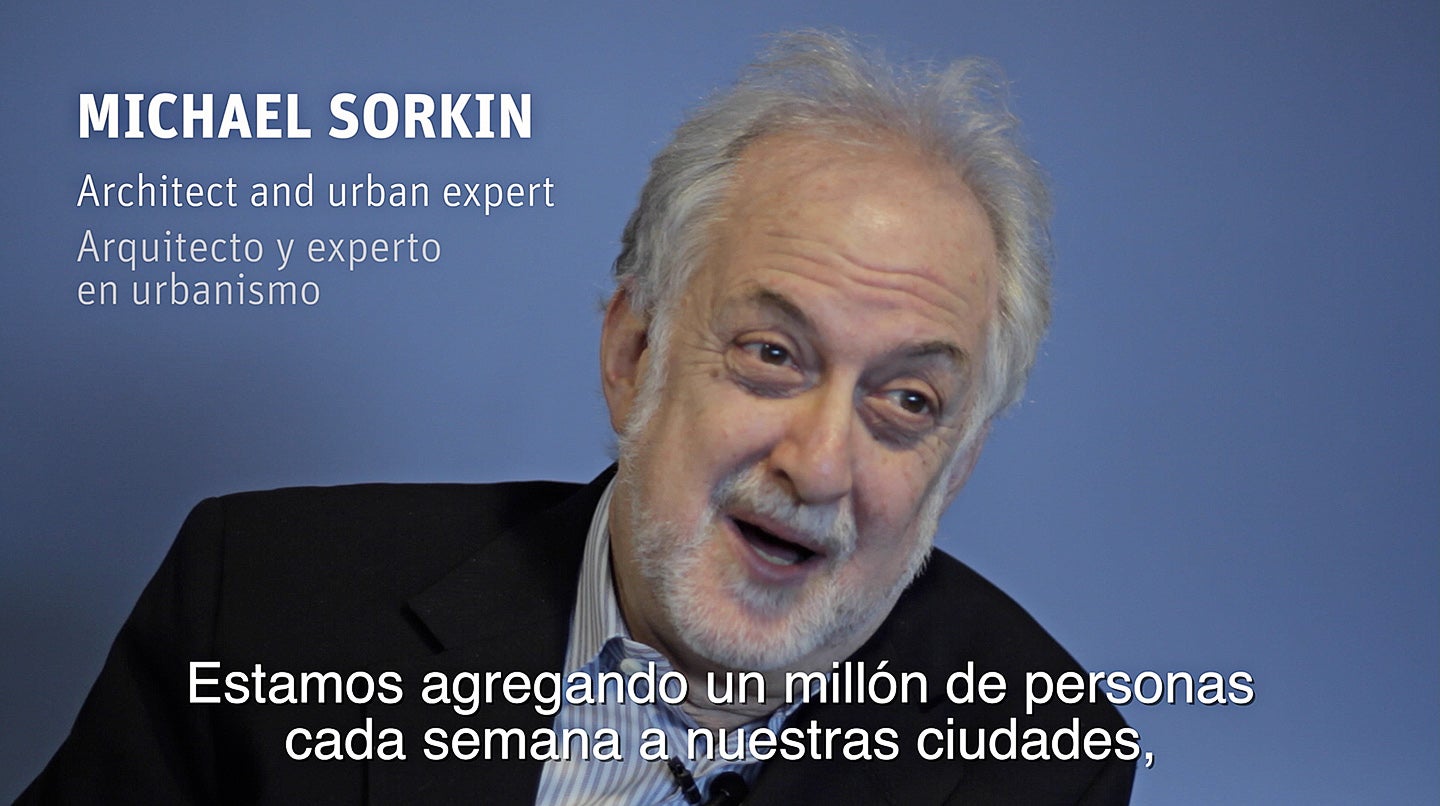Español // English
Four experts talk about the challenges and opportunities that cities face in the 21st century to become more inclusive and sustainable: Michael Sorkin, architect and urban expert; Abha Joshi-Ghani, Director for Knowledge Exchange and Learning at the World Bank; Christopher Sabatini, Senior Director of Policy at the Americas Society/ Council of the Americas; and Timothy Docking, Lead of the Emerging Markets Funding (EMF) Group at IBM Public Sector.
http://vimeo.com/109724578
These interviews took place at the launch of the Winter 2014 issue of America’s Quarterly, held by the Emerging and Sustainable Cities Initiative of the Inter-American Development Bank in February 2014.
ESCI: What are the main challenges that cities are facing today?
Michael Sorkin: One of the challenges is that they are getting so large that the urban population of the world is growing exponentially. We are adding a million people a week to our cities and we don’t have enough solutions for housing and employing this people. Half of them are living in slums. And our conventional solutions to urban growth–which is to say megacities and sprawl–are extremely unsustainable.
Abha Joshi-Ghani: I think the biggest challenge of cities around the world today is sustainability. But sustainability defined in terms of inclusion, environmental sustainability and financial sustainability. A city is not just a physical place. I look at the city as a place where all the development challenges meet: health, education, livability, jobs, etc. Cities also drive economic growth. If cities don’t start looking at how they are managing their own systems internally, they will not be able to resolve this. And the reason I say that we must look ‘within the cities’ is because right now what we see is that the planning department doesn’t talk to the transport department, and the transport department doesn’t talk to the housing department. We can’t have these institutional silos in a city working almost at cross purposes at times and not really integrating the services that they are providing to the citizens.
Christopher Sabatini: You are adding new populations on top of already poorly planned cities. Many of them were not epicenters of urban growth in the 60s and the 70s. Smaller cities that the IDB is focusing on are the ones for which economic and population growth is challenging. All the infrastructure problems come with that, as well as the problems of urban sprawl. And that’s not just a problem of urban management or environment or administration. It’s also a social inclusion issue. A city becomes more difficult to become integrated when it’s periphery is inhabited by recent migrants, or when these citizens are not integrated into the infrastructure or transportation networks of the city. These people often face the longest commutes to their jobs.
To that, I can also add the challenges of climate change. Close to 75% of cities in the region are located in lowland areas close to bodies of water. So as we see the flooding and intense storms that are coming with climate change, a lot of these cities are very much at risk. And that’s a problem not just in the short term in terms of managing the disasters that come with it and the dislocation, but also a physical problem of cities’ abilities to be able to develop and relocate population, as well as maintain their own GDP and investment.
ESCI: How can cities face these challenges?
Michael Sorkin: The solution is much about equity. When we talk about sustainability we talk about the distribution of resources. And the extreme inequality that characterizes American and Latin American cities is something that needs to be addressed. Cities are both the site of great problems of inequality or greenhouse gas emissions, but they also have the potential to be the great solution. Well-designed cities are the most efficient and sustainable way of living on the planet.
Christopher Sabatini: Communication, information sharing, providing examples is one of the most important things that can be done to promote not just sustainable cities, but also to promote solutions. Because what’s happening right now in the region–from Canada to Argentina–is that, besides what you read on the headlines, there is a whole test tube of innovation and change that is going on, at the urban level, at the national level, at the world level, that people need to be aware of. Suddenly now we are seeing that people are solving their own problems, whether it’s cities coming together to define their public budget, or whether its companies working with governments to help improve transparency and provide information for citizens to be able to use and monitor their governments.
Timothy Docking: Smarter cities are cities that use instruments to measure their data. We have instruments that are interconnected so that we can form networks of information, and then we apply to this data an intelligent sort of analytical capacity to make sense out of these disaggregated data points, and from there to create models to tell a story and help us project things that are going to occur. The needs of cities and the needs for investment in infrastructure are so great that it’s not just going to be one bank or one municipality or one group of taxpayers that are going to solve this problems. It’s going to take a team approach, and the private sector is investing heavily in those investments that need to be harnessed. And there needs to be cooperation between private and public sector in order to achieve these goals. The private sector can bring its innovation and solutions to bare to solve some of these problems that our urban communities are facing around the world.
https://vimeo.com/110285509


Leave a Reply